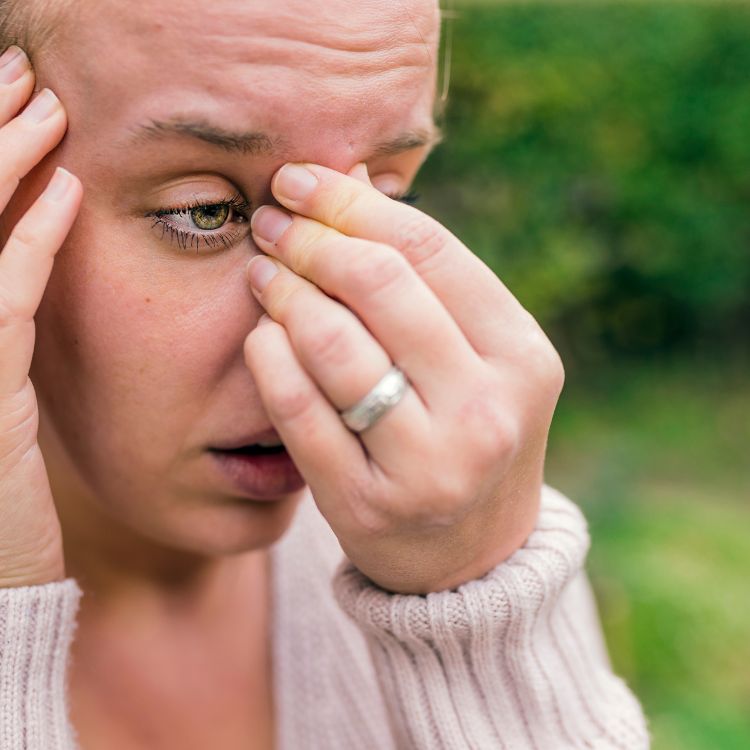Hidradenitis Suppurativa (HS) is a chronic and oftentimes debilitating inflammatory skin condition that affects numerous individuals worldwide. As HS progresses, it is marked by stages that can be differentiated by their specific symptoms and severity. Understanding the various Stages of Hidradenitis Suppurativa plays a crucial role in helping patients, healthcare providers, and the broader community to better comprehend the unique challenges and treatment needs someone with this condition may face at different points in their journey.

In this article, we aim to provide clear and practical information on the stages of Hidradenitis Suppurativa, covering the vital aspects of symptoms, treatment options, and coping strategies tailored to each stage. By offering in-depth insights into the progression of HS, patients and their support networks can develop a well-rounded understanding of the condition and effectively navigate their healthcare journey.
The three primary stages of HS are identified as Hurley stages I, II, and III. Throughout these stages, the complexity and intensity of the disease can escalate, presenting specific treatment and management requirements for each phase. To help individuals with HS and their loved ones better understand the nuances of these stages, we will discuss distinctive symptoms, treatment approaches, and coping strategies best suited for each stage. Our goal is to empower those living with HS to take a proactive approach to their disease management and access the support they need.
By providing comprehensive information on the stages of Hidradenitis Suppurativa, we aim to foster a more thorough understanding of the condition, ultimately contributing to a better overall quality of life for those living with Hidradenitis Suppurativa. Through increased awareness and education on HS progression, patients and healthcare providers can work together more effectively to create tailor-made treatment plans that address the unique needs of the individual at each stage of their journey.
Stages of Hidradenitis Suppurativa:
Stage I: Mild Symptoms and Early Diagnosis
Symptoms:
At Hurley stage I, HS typically presents as isolated, painful, and inflamed lumps (nodules) that may rupture and discharge pus. These lesions predominantly appear in areas where skin rubs together, such as the armpits, groin, buttocks, and under the breasts.
Treatment:
During the initial stage, treatments focus on controlling inflammation and preventing further complications. Topical ointments like clindamycin, oral antibiotics such as tetracycline, and over-the-counter nonsteroidal anti-inflammatory drugs (NSAIDs) are common recommendations. Maintaining proper hygiene and avoiding friction or irritants can also alleviate symptoms and minimize the risk of infections.
Coping Strategies:
Early diagnosis provides an opportunity for patients to begin implementing lifestyle changes that can help manage symptoms, such as wearing loose-fitting clothing, implementing a skincare routine, and avoiding smoking.
Stage II: Moderate Symptoms and Frequent Flare-ups
Symptoms:
In Hurley stage II, HS becomes more severe, with more frequent and larger nodules and abscesses that may accumulate pus. During this phase, the formation of sinus tracts – tunnels beneath the skin connecting abscesses – can occur. Scarring is also more likely to develop at this stage.
Treatment:
Treatment options expand in stage II to better manage worsening symptoms. Oral antibiotics become more commonly prescribed, and in some cases, healthcare providers may recommend anti-inflammatory injections or biologic medications like adalimumab. Some patients may benefit from minor surgical procedures to drain inflamed lesions or remove sinus tracts.
Coping Strategies:
At this stage, stress management techniques such as meditation, deep breathing exercises, and engaging in recreational activities can help improve emotional well-being and potentially reduce flare-ups. Seeking support from friends, family, or support groups can help patients share their experiences and foster understanding.
Stage III: Severe Symptoms and Chronic Pain
Symptoms:
Hurley stage III involves severe symptoms, including widespread nodules and abscesses, interconnected sinus tracts, and extensive scarring. In this stage, flare-ups are often persistent, and HS may become disabling due to increased pain, restricted mobility, and the risk of infection.
Treatment:
More aggressive treatments are typically recommended during stage III HS, which may include long-term use of antibiotics, immunosuppressant medications, or tumour necrosis factor-alpha (TNF-alpha) inhibitors. Surgeries to remove large areas of affected tissue or skin grafts to close wounds after excision may also be necessary.
Coping Strategies:
Managing chronic pain and the psychological impacts of HS should be a priority during stage III. Working with a mental health professional or a pain management specialist may provide valuable support. Additionally, fostering an open dialogue with healthcare providers and support networks can help patients gain access to resources and care they need.
Understanding the Importance of a Customized Treatment Plan
HS is a complex condition, and individuals may experience varied symptoms and progression rates. It is important for patients to work closely with their healthcare providers to create tailored treatment plans that adapt to their unique needs at each stage of the disease. Approachable communication and ongoing monitoring play a vital role in ensuring successful long-term management of HS.
Developing a comprehensive knowledge of the various stages of Hidradenitis Suppurativa empowers patients, healthcare providers, and the broader community to better understand and manage this chronic condition. By familiarizing oneself with the symptoms, treatments, and coping strategies best suited for each stage, patients living with HS can take a proactive approach towards their ongoing care and well-being. Through the collaboration of patients and healthcare providers, individuals living with HS can be better supported in their journey, ultimately contributing to an improved quality of life for those affected by this challenging disease.



